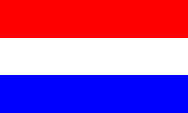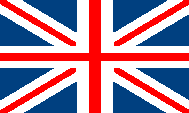
The eclipse observations and their importance

 |
The eclipse observations and their importance |  |
The main interest of an eclipse is to observe the solar crown. In fact, this crown changes depending on the cycle of solar activity. At its maximum, the crown is rather circular while, at its minimum, long protuberances are visible.
Many astronomy questions can be studied only during a total solar eclipse. These questions are mainly about the size and composition of the solar crown, and the deviation of the rays that pass near the Sun because of its magnetic field. In fact, the solar disc's strong luminous intensity and the illumination of the Earth's atmosphere by the Sun make the observation of the crown and other stars impossible except during these rare phenomenons.
Eclipses have been observed since Antiquity. The Chinese annals mention an eclipse that took place in 2136 before Christ.
The names Thales de Millet and Pythagoras de Samos can be associated with Greek astronomy, even though we have received none of their works. The Legend that Thales predicted a total solar eclipse in 585 BC is probably apocryphal.
It is around 500 BC that the Greek start the planets' movements.
It is the Babylonians that first discover, empirically, the periodicity of the "Saros" (about 18 years) but the knowledge of that period isn't precise enough to be able to give the time and moment of an eclipse. But when an eclipse was to occur, it was often stated. In fact, many recordings of eclipses that took place since 600BC have been discovered.
Studying former eclipses is very important for astronomy. It is now possible to calculate the timing of an eclipse that occurred in Antiquity. When we compare the elements obtained and the stories found, it is possible to see the errors that were made in the historical documents.
For example, the eclipse that was supposed to occur on August 1st 1714, day of the death of England's Queen Anne, actually happened on April 22nd 1715. This eclipse is very important because it gave to Hedmond Halley the opportunity to measure the exact position of the Moon, something that had never been done. Halley describes the crown (he's the one who gave it its name) and the chromosphere, the red zone of hydrogen situated near the Sun.
In the XIXth century, Francois Bally, while observing the 1836 and 1842 eclipses, described little fragments of light visible before and after the totality.
This phenomenon is now called le grain de Bally and is the result of the last rays of Sun passing through the lunar mountains
It was only after the 1842 eclipse that it was admitted that the protuberances seen around the crown were from the Sun and not the Moon.
The eclipse that occurred on November 15th 1868 allowed Janssen to show that the protuberances were mainly composed of hydrogen. In these protuberances, was soon discovered an unknown substance on Earth that was named helium after the Greek word for Sun : helios
On May 29th, 1919 an eclipse allowed Arthur Stanley of Eddington to put forth a phenomenon that had been established earlier : the theory of relativity. This phenomenon called the "Einstein effect" is the deviation of light when passing near a mass.
During an eclipse, since the Sun is hidden it is possible to see the stars and, for those that are situated in the Sun's direction, to estimate their visible deplacement.
5 months of work were needed to go through the measurements observed during the May 29th and November 6th eclipses in 1919. Eddingfton was able to show that the effect foreseen by Einstein did exist and so brought on the first experimental proof of the theory of relativity.
Since eclipses are not frequent, Bernard Lyot invented in 1930 the "coronographe" : a telescope which allows the observation of the solar crown while simulating an artificial eclipse this because it occults the apparent surface of the Sun.
Since then, research in solar physics has largely benefited from new and powerful techniques brought to us by space conquests.
The launching of the first solar observatory in 1962 marked the beginning of a campaign which consisted of 8 solar observatory satellites that would last 17 years.
The largest solar observatory now in orbit, the station called SKYLAB, consisted of a battery of 8 big telescopes, one being a coronographe.
From May 1973 to February 1974, during three assignments, astronauts brought back from this laboratory millions of photographs, unveiling many of the solar atmosphere's wonders.
Thus, during the last three decades, the coming of space research, together with the use of increasingly high-performance telescopes, has allowed more and more precise observations to be made of all the different solar atmosphere layers.
  Previous page Previous page |
Next page   |
| Webmaster: Antoine van Ruymbeke | Last modifications: 3 July'99 |